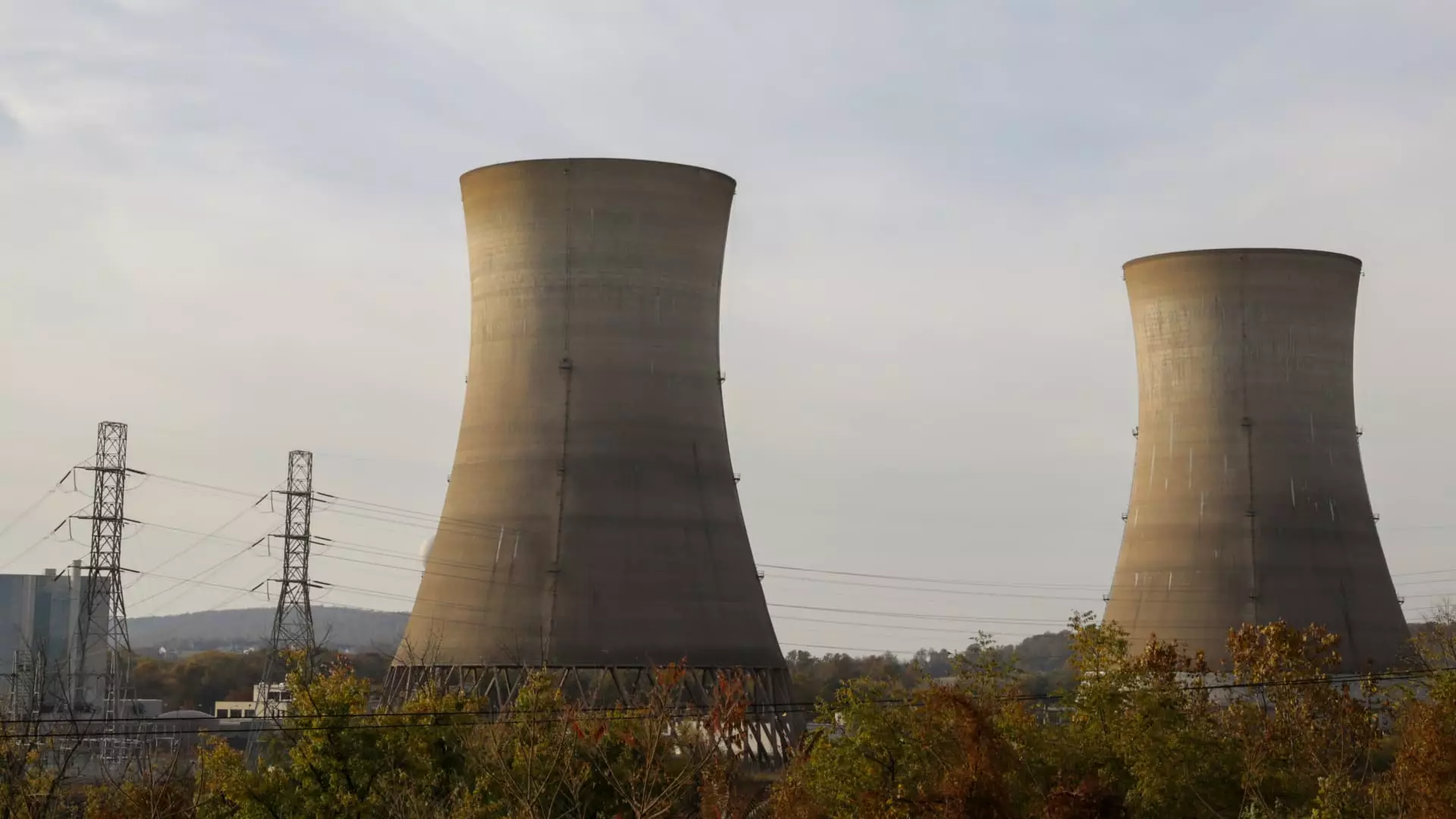In a landscape where energy solutions flutter between sustainability and dependence on fossil fuels, the uranium market suddenly emerges as an unfaltering contender. Sprott Asset Management’s CEO John Ciampaglia highlights a burgeoning wave of optimism as our global appetite for energy skyrockets, spurred on by an increasing reliance on artificial intelligence and data centers. This enthusiasm infuses optimism into the nuclear sector, an arena that for years has received mixed reviews from environmentalists and tech advocates alike. A critical examination of these developments reveals an irresistible duality: while nuclear energy promises cleanliness and efficiency, it also brings forth complex socio-political challenges that any informed discussion must confront.
The Nuclear Narrative Amid Global Crises
The pandemic of energy insecurity—exacerbated by geopolitical upheavals, particularly in Europe—serves as a backdrop for nuclear energy’s newfound relevance. Following Russia’s abrupt oil supply cutbacks, the flaws in global energy policies became starkly evident. Ciampaglia suggests that nuclear energy not only meets current power demands but does so with a negligible carbon footprint, pushing forward a narrative of security and sustainability. It’s a compelling argument—nuclear energy is incredibly energy-dense, capable of delivering massive quantities of electricity. Yet, as we stand at this crossroad, one must wrestle with uncomfortable realities around waste disposal, potential meltdowns, and the long construction times for new plants.
This enthusiasm has begun translating into financial boons for uranium-focused investment firms. The Sprott and VanEck entities highlight an invigorated market that’s thriving despite the looming risks associated with nuclear energy. It feels almost paradoxical: in a world yearning for clean energy, we find ourselves revisiting a source fraught with fears of catastrophe. Are we willing to overlook nuclear’s complicated legacy in our haste to address the climate crisis?
Market Dynamics: Hopes and Caution
Both Ciampaglia and Van Eck assert that the current trend toward nuclear power is robust. Emerging markets for uranium have surged with over 20% increases in recent months, underscoring a swift pivot to nuclear energy. However, the realities paint a more nuanced picture. While the market exhibits resilience, the timeline for building new nuclear facilities stretches on for years—an agonizing period during which investors grow increasingly restless. Can uranium’s prospective zenith outweigh the looming doubts around the regulatory and infrastructural frameworks necessary to bring these energy sources online?
Van Eck’s comments bring to light a significant hurdle: time. Investors operate with a relentless clock ticking in the background, and the slow nature of nuclear construction can lead to disillusionment. Additionally, the political landscape surrounding nuclear power continuously shifts, influenced by public sentiment, changing administrations, and regulatory bodies. Would a politically motivated endorsement behave as a double-edged sword—quickening advancements while simultaneously provoking NIMBYism, with local populations opposing nearby nuclear facilities?
Tomorrow’s Energy, Yesterday’s Concerns
The 21st century has seen a significant pivot from fossil fuels, with nations scrambling to find alternatives that promise not only efficiency but also align with environmental goals. Nuclear energy presents an alluring solution to fossil fuel dependency. Countries across the globe appear keen on reinvigorating their nuclear power programs, with remarkable uptake particularly outside of Germany. Yet pride in this potential energy source cannot dull the palpable fear stemming from the catastrophic history associated with nuclear incidents.
The question facing us today oscillates between urgency and scrutiny. Are we ready to invest heavily in a nuclear future while simultaneously addressing the valid fears that accompany it? The Iranian and American perspectives, marked by a disheveled past, echo loudly as we tread this delicate path forward. The future may teem with glowing promise for uranium as a key player in the energy portfolio; however, we must tread cautiously, balancing the need for innovation with a due respect for public sentiment rooted in fear and grievance.
In this tightly woven discourse on energy solutions, we stand at a pivotal moment—one that demands a critical evaluation of our aspirations amidst a rapidly changing environment.

